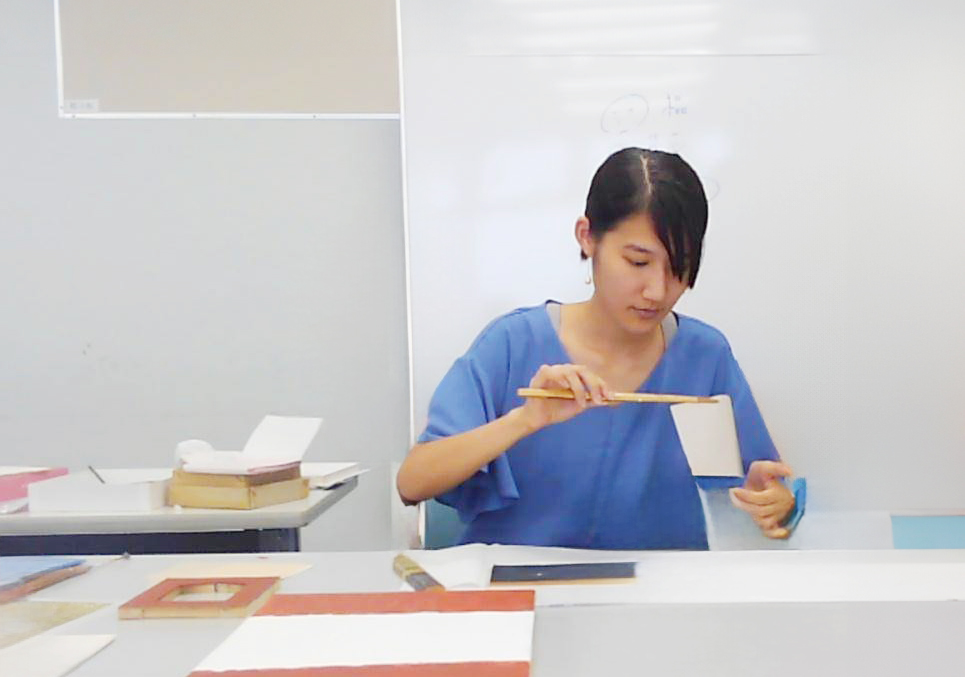
In conversation with Marie Otsuka, who will be holding a solo exhibition at Isetan Niigata from November 20th, we talk about her life as an artist. Please enjoy reading this interview by Imoko Ichinose.
Interview with artist, Marie Otsuka – A picture book with a happy ending
Made in Nagaoka short short
Thank you for taking the time for this interview today. You majored in architecture at university – did you start painting from an early age?
I grew up drawing since I was very young, and my paternal grandparents used to take my doodles on the backs of flyers so they could frame and keep them. The scribbles and doodling were drawings of the people closest to me, and they told me they loved it. I vaguely remember getting such a warm and happy feeling, thinking it would be nice if I could do this kind of work. That memory is the driving force behind my art.
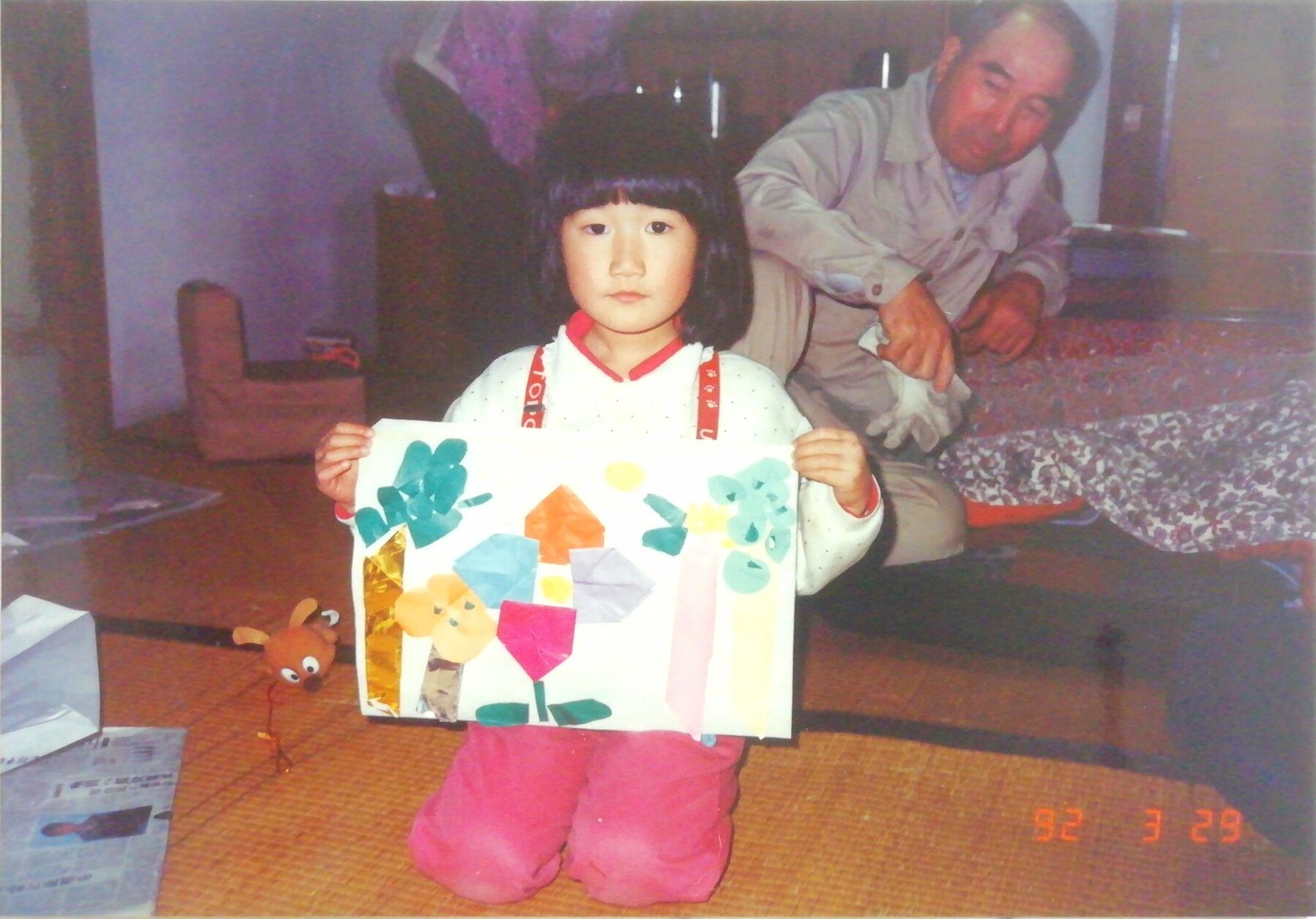
The drawings graduated from familiar faces to geometric patterns, such as hearts and triangles. I would sometimes fill an entire line of my notebook with small hearts, then work on the next two lines with diamond shapes. Filling up the page with shapes and patterns appealed to me, and over time it evolved into my current style of using dots to fill a painting.
Your drawings have a distinctive style of telling a story. Were you a story teller from a young age?
In middle school, I used to share stories with my friend by writing short stories, but other than that, I didn’t write any stories. What I loved since I was very young was to imagine stories and then verbalize them into stories. Being a huge fan of Harry Potter at the time, I used to write stories about magic. With also being similarly influenced by manga and anime at that age, I was inspired to write about cats transforming into humans. My friends would jump in while I told stories, “this character is nice!”, or “how should the story continue?”. I was just putting my thoughts into words and my storylines didn’t have much structure then, so my friend would often beg me to tell “the rest of the story”.
That’s probably how I got into drawing paintings with a narrative. I wanted my paintings to describe the setting and how people felt.
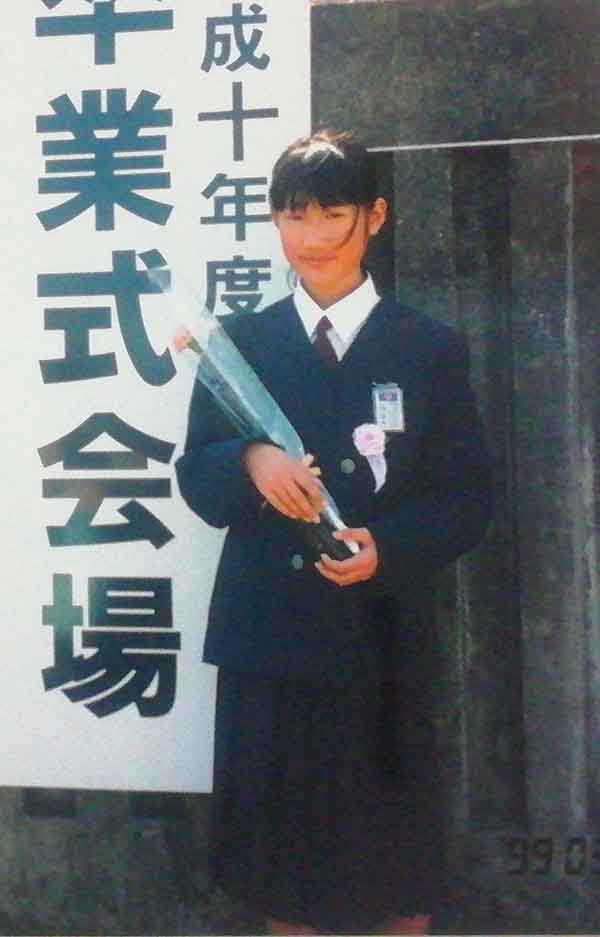
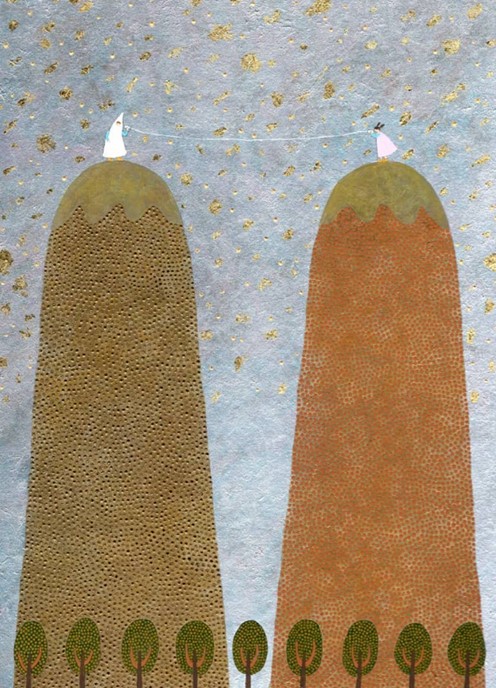
Perhaps your paintings’ unique narrative style has its origins in the storytelling you used to do with your friends in middle school. Why did you decide to pursue your art studies through an architectural design program instead of a college of arts program?
With my interest in art, I was set on studying art at a school with a design program, but I didn’t personally know any designers or anyone who was an artist by profession. My knowledge of the field only extended to lines of work such as carpentry and construction. Afraid of being probed by my relatives about whether a path in art would open up any ‘real’ job prospects for me, my next choice of study was interior design. The field offered a wide range of jobs available with the added perk that I could commute to classes from home. Even before university, I enjoyed reading interior design magazines, so it was a natural progression to decide to go visit famous architectural buildings, learn how to incorporate exterior lighting and to create comfortable spaces – taking a holistic approach to learning.
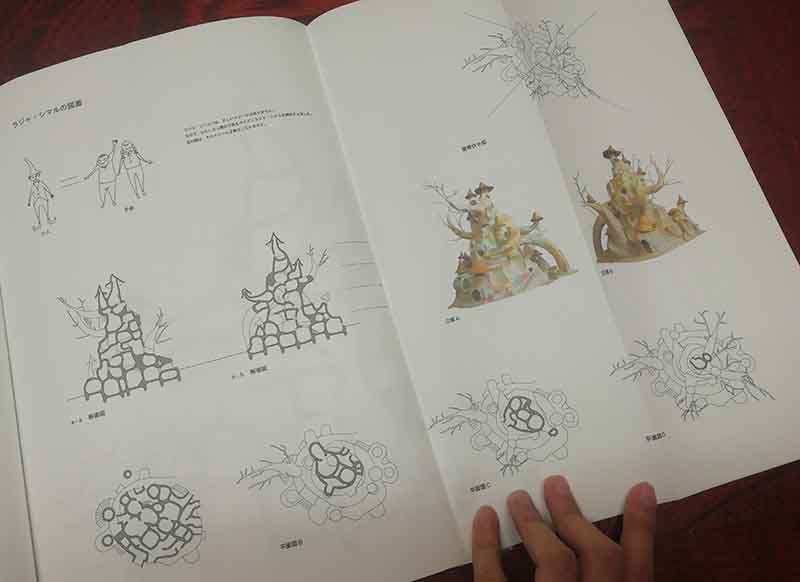
Did you start submitting your illustrations to open exhibitions and entering art competitions once you moved to Tokyo, upon graduating from a German university?
Many of my friends and acquaintances were illustrators or in related fields. I often mentioned to them that deep down, I wanted to become an artist. They encouraged me to submit my illustrations to open exhibitions, which I did. I ended up as one of the finalists, which gave me the confidence I needed to commit to becoming an artist. Until that point, I doubted my own instincts, unsure of whether a certain brush stroke had the right feeling, or whether I would be able to find work. Becoming a finalist helped me to have more belief in myself to take the path to become an artist.
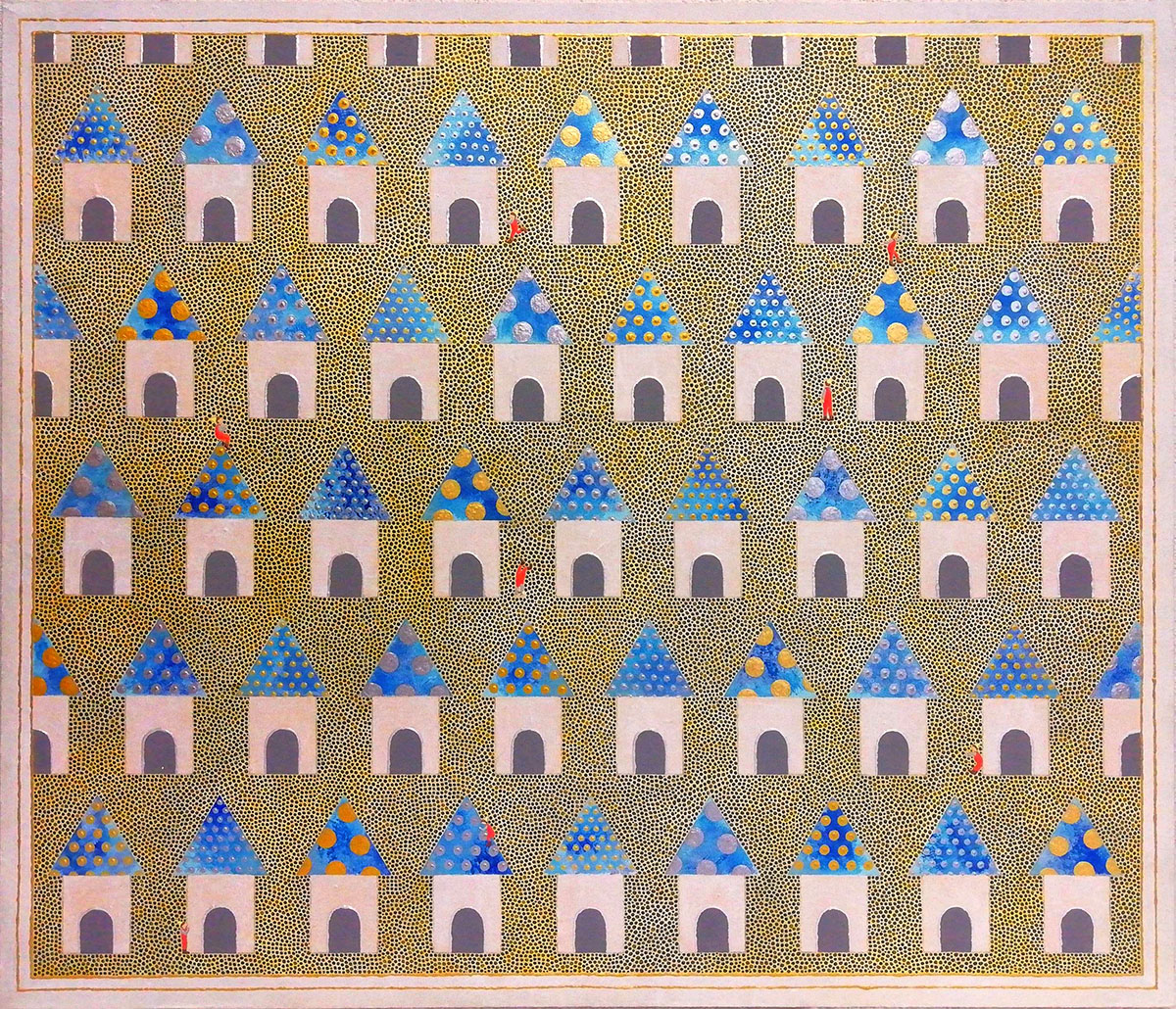
Becoming an artist after moonlighting odd jobs
How did you transition to a professional artist?
A few years ago, I started holding solo exhibitions as an artist at department stores in various areas. Until then, I had to moonlight with odd jobs to make a living.
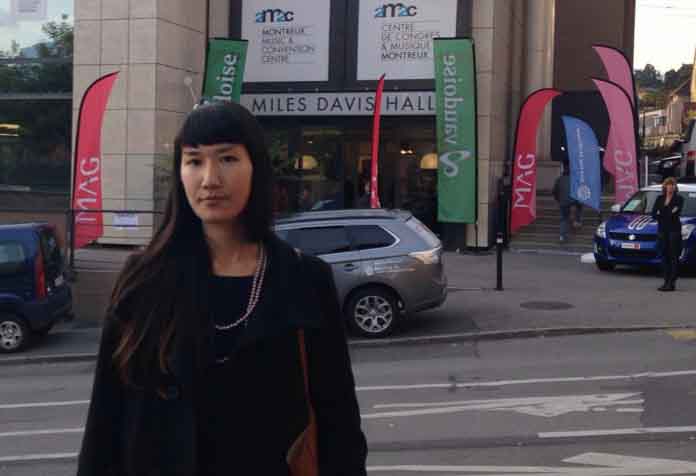
Painting is something I enjoyed doing while otherwise having no practical qualifications, such as bookkeeping. The only job I could think of doing to earn a living was in the service industry. I got a job as a part-time clerk at a bookstore because of my love of storytelling. I dreamt of someday illustrating a storybook, and working at a bookstore felt like a good starting point.
Were you drawing illustrations while working at the bookstore?
15 years ago, the hourly wage was about 960 yen ($10.96 USD in 2009). To financially support myself in Tokyo at this wage level, I needed to work all day long. After being left with no time to paint, I quickly realized it defeated the whole purpose of working with storybooks.

I thought, “I’d better look for a better paying job”, and soon found myself at a local distribution sorting center. It was manual labor but the pay was good. I quickly realized I wasn’t cut out for this type of work because I wasn’t nearly fast enough. By the time I found the receipt slip of the product, the package had passed by me down the conveyor belt. Perhaps it was my poor vision, but I was overwhelmed and my coworkers had to come in to rescue me, pointing out “you’re in trouble here”, which I wholeheartedly agreed with and quit the same day.
Having great observation skills as an artist didn’t help you in a different job environment when it came to dynamic vision?
I do much better observing a stationary object, so sorting a moving object was not my forte. I was disappointed only for a bit, because I quickly found another job paying 1,340 yen ($15.30 USD) an hour at a bag shop within a department store. I immediately applied and was thankfully hired, and was finally able to find time to paint.
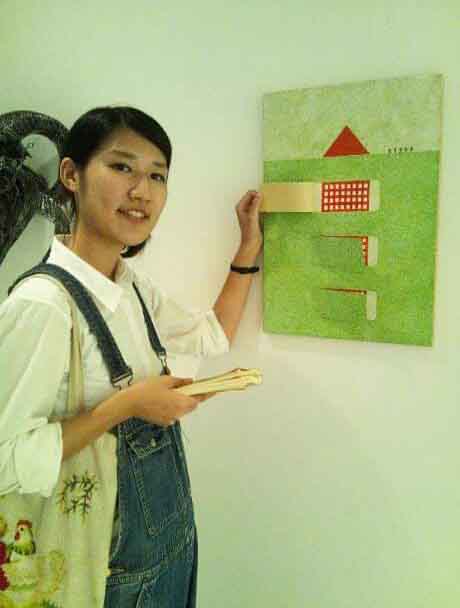
What a coincidence that you used to work jobs in a department store, and you’re now holding exhibitions in one.
It was a happy coincidence because it was only much later that I learned the importance of doing showings at department store art galleries. It helped me not get too nervous and feel more at home, remembering how “I used to work in the bag section here”! The path to becoming a solo exhibition artist was long and arduous, but I was able to enjoy the ride in my own way.
You’re now holding solo exhibitions in both Kansai and Kanto, in addition to writing a column for your local paper Nagaoka Shinbun. Congratulations on your accomplishments.
I’m starting to have more people take interest in my art and can now hold solo exhibitions. I’m sincerely grateful to everyone that’s helped me along the way.
Paintings of snow and landscapes reflected in the waters of my hometown
Your work gained a lot of fans; how do you create your unique worldview?
I was a world away from creating paintings in my school days, which meant that I had very little knowledge about skills, techniques, or art materials. Upon moving to Tokyo after university, I stayed — or more like shared a room — with a friend who was working in the design field. I learned so much from them – asking what materials they used to paint with, and they introduced me to acrylic paint.

Initially, I was painting on western paper, but the art management course at FFD (Fukufukudo) taught me about various types of paper and I experimented with some. Washi stood out, offering a completely different expression when used with acrylic paint. Washi is highly absorbent and it’s hard to identify that it was painted using acrylics. I found the texture and expression particularly interesting when painted over in thin coats and began to use the combination of acrylic paints on washi.
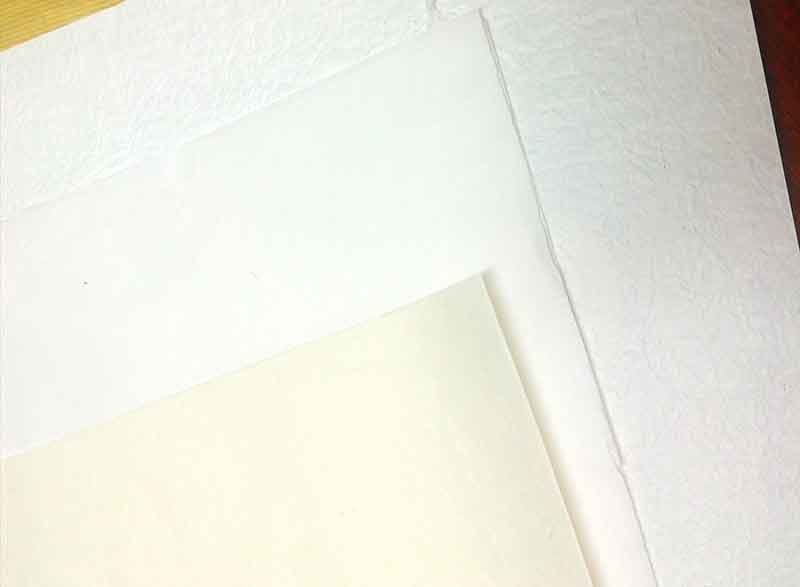
If I wanted to work on washi, I wanted to use washi from my hometown. Ever since I learned about Oguni-washi, which is designated as a national intangible cultural artifact, I’ve since been using Oguni-washi. Even if my work takes me away from my hometown, I want to give back to the community however I can, no matter how small that may be.
The cream color that Oguni-washi offers inspires my creativity and I can’t imagine painting without it.

The washi from your homeland is part of what inspires you to create art. Your works display a humorous side, such as a person coming out of the sun and the moon split in half. It has a narrative element and can be described as a “picture book within a painting”. Do you know how you came up with this type of worldview?
I knew that if I were taking the trouble of incorporating an expression into my painting, I wanted to create one that could only be achieved through a painting. Take the moon for example; there’s no such thing as a moon splitting in half or falling down, but as a drawing, we can use our imagination and express it with a sense of humor. We all used to have so much more creativity as children, and I use memories from my childhood and my personal experiences and layer them to create a narrative painting.
For instance, when you look up at the sky, the moon seems so small. I use that piece of memory, and depict the thought of “when the moon falls down to earth, it will retain its small size” in the painting.
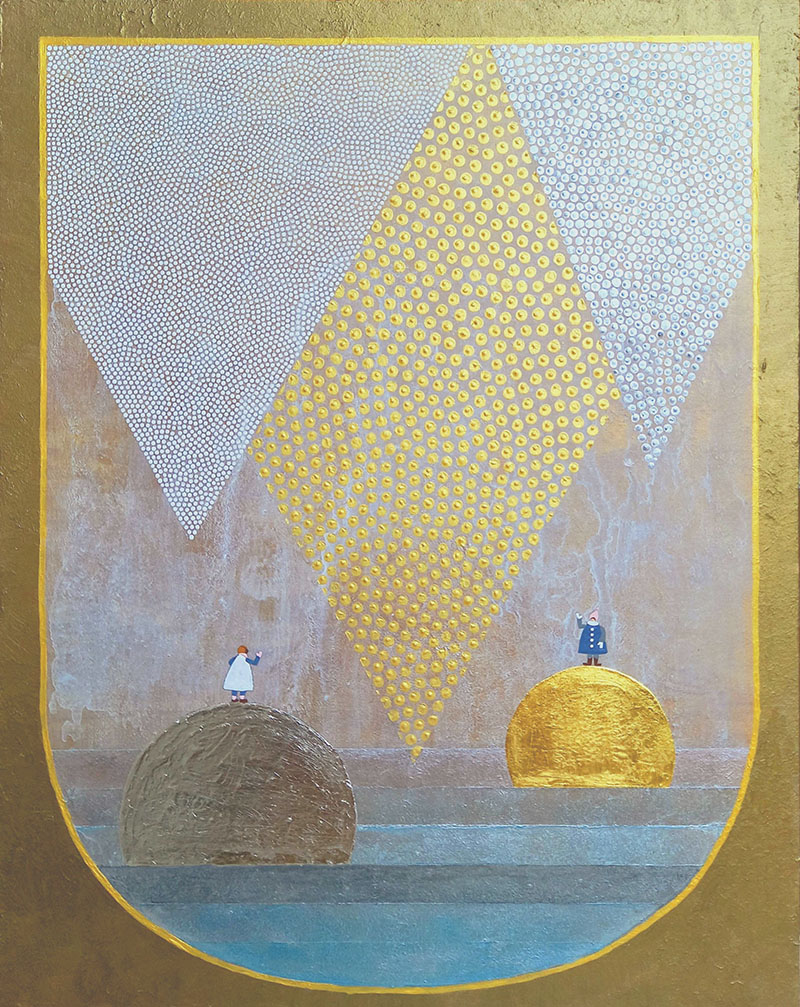
Another example of a childhood memory is going outside on an early winter morning and wondering, “will that cloud freeze if it’s really cold outside? The cloud seems so fluffy; I wonder why it’s not frozen stiff?” I tried to capture these thoughts in a painting.
Do your drawings of people playing in a vast landscape reflect your unique view through the lens of childhood in your hometown?
That’s probably true. I’m often asked “does such geography exist?”, or “do mountains really look that way”? I lived in Niigata until I finished college, and in my childhood my grandparents used to take me to the mountains, sea, and rivers. I remember it in my mind as if it’s a picture.

One of my artist friends from Tokyo visited Niigata on a sightseeing trip. They told me that having only seen my paintings, they weren’t sure what to expect of the scenery, but that as soon as they saw the Nagaoka countryside, they immediately understood my painting. I was surprised to learn that the landscape I took for granted was not the norm for others, and gained a new understanding of how people saw my work.
During the rice planting season, the rice fields are filled with water. You can see everything reflected in the water, the people, mountains, and houses. I’ve only seen sceneries like this around my hometown. Even now, when I paint the water shore, I assume that the mountains on the other side of the water’s edge will be in the reflection and include it in the painting.
I used to think that I’ve been painting off of my imaginations from childhood, but in hindsight realize that I’ve been very fortunate to be influenced by the abundant nature in my upbringing. I am the artist I am today because I grew up in Nagaoka, Niigata.
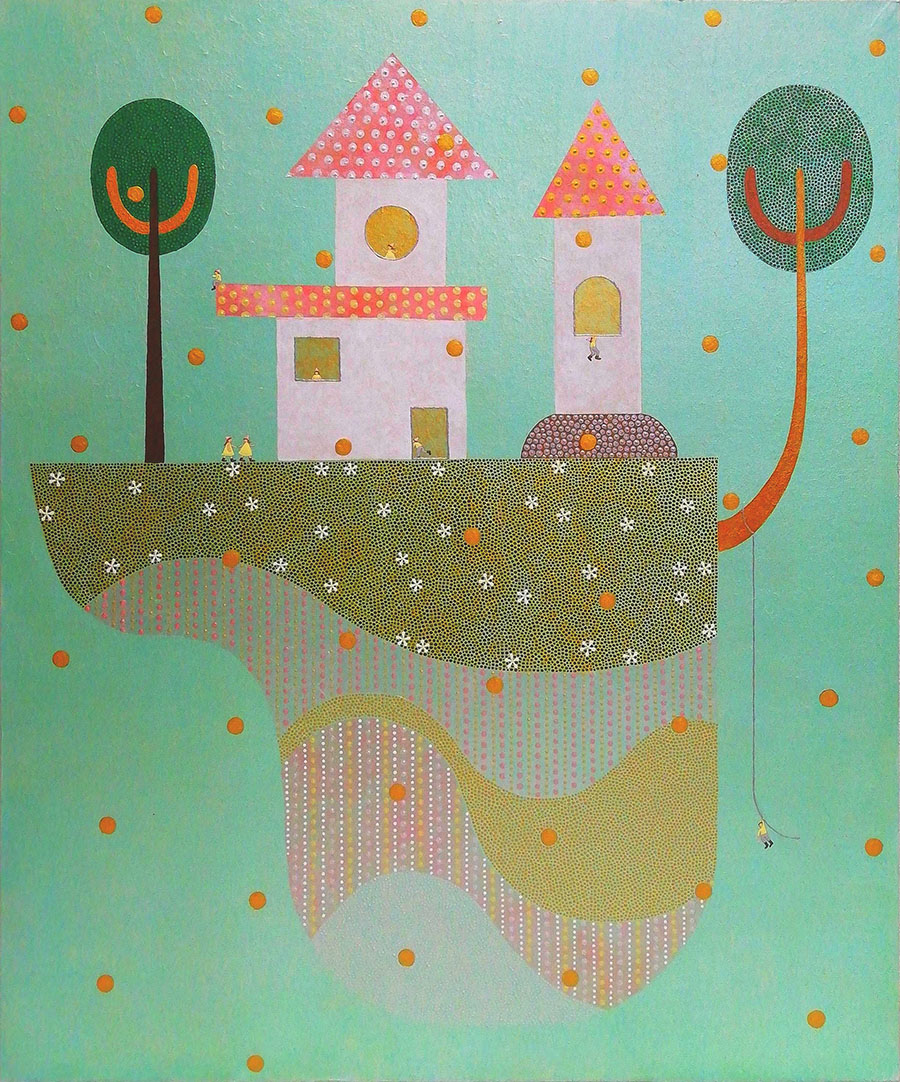
I sincerely look forward to seeing more of your artworks in the future. Thank you for your time today.
(interviewer ・ written by Imoko Ichinose)
Marie Otsuka, Artist bio
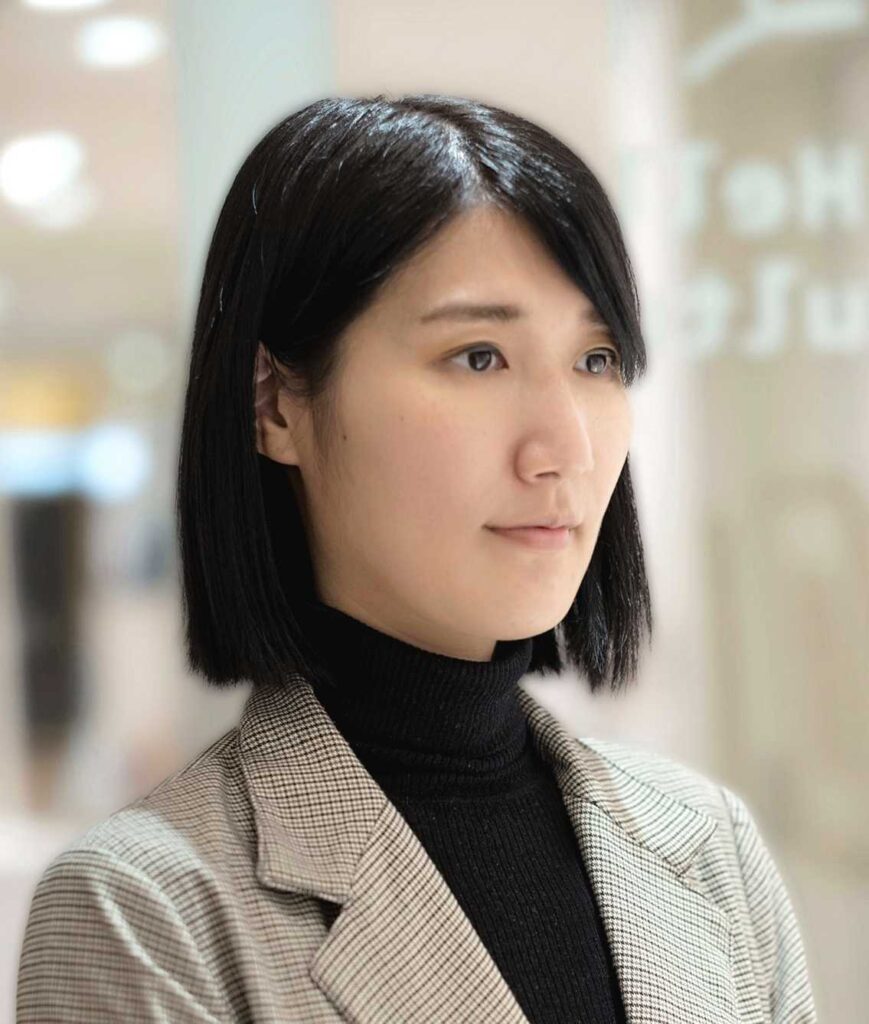
Marie Otsuka
1987 Born in Nagaoka, Niigata
2009 Graduated from the Nagaoka Institute of Design, with a major in architectural design
2012 Art Fair, Shanghai
2014 Group Exhibition, Basel, Switzerland
2015 Art Fair, New York
2016 Art Fair, Hong Kong
2017 Group Exhibition, Tokyu Tama Plaza
2018 Art Fair, Singapore
2019 EGC, Fukuya Hatchobori Main Building (held in 2020 and 2021)
2022 Solo exhibition, Isetan Urawa Store
Duo exhibition, Isetan Niigata store
others
Description of Marie Otsuka’s work “Sanshaku Dama” (fireworks)
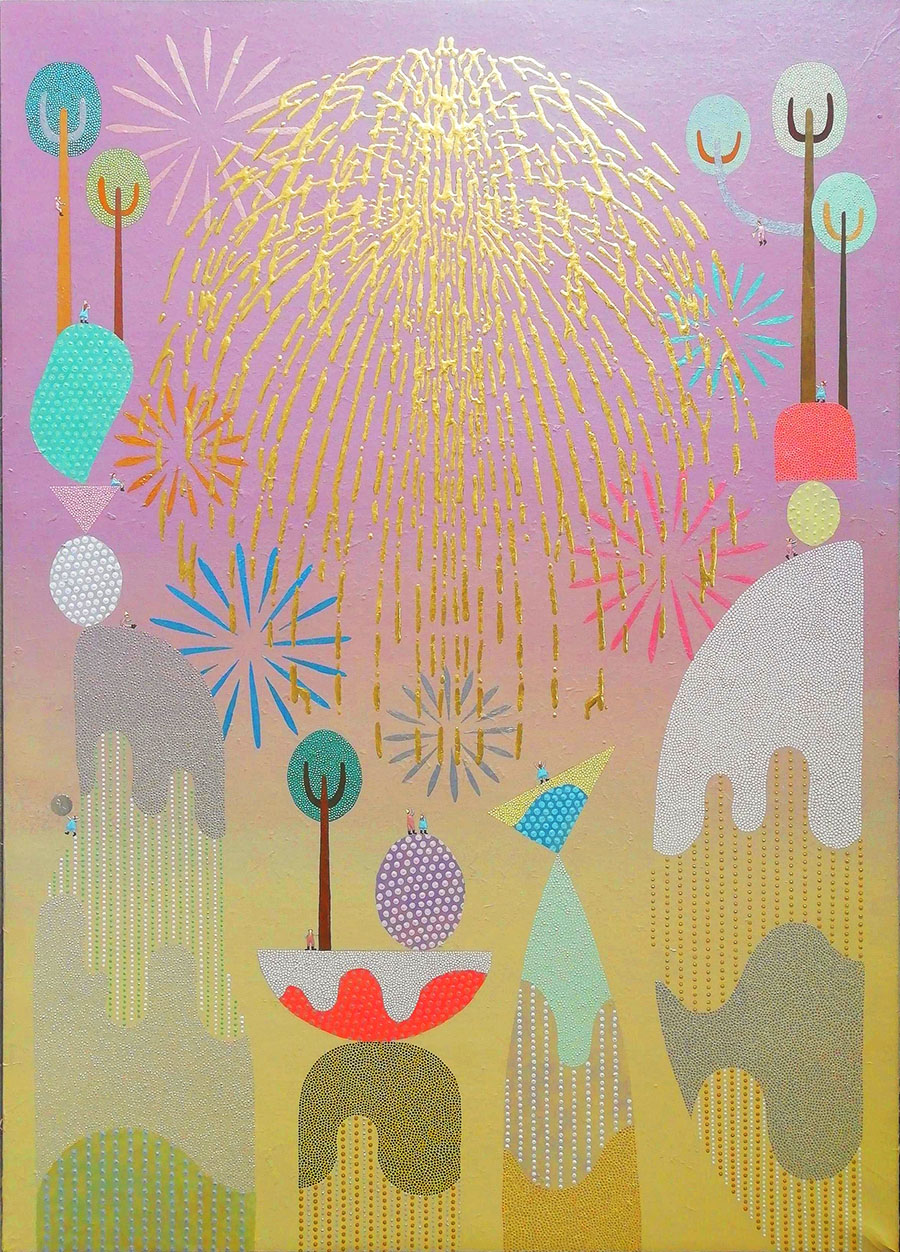
The annual firework festival “Nagaoka Grand Firework Festival” held on August 2nd and 3rd in Nagaoka, Niigata is one of the three biggest firework festivals in Japan. The festival was also famously depicted by Yamashita Kiyoshi’s Hari-e (paper collage) art piece.
Marie Otsuka grew up watching the Nagaoka Firework Festival every year since her childhood.
“As a little girl, the highlight of the fireworks was the Sanshaku Dama (3-foot firework). In the evening, the riverbank would be packed with people and impossible to find a place to sit. Even if we found a place to sit and watch, my neck grew tired from having to sit looking up the entire time. Nevertheless, I loved to watch the fireworks with my favorite people every year.”
The painting depicts fairies enjoying watching the large fireworks, each from their favorite places. The artist, who is a big fan of stories with happy endings, painted this as if to fulfill a childhood dream.
An important element of the artist’s worldview is the expressive technique “Nouvelle pointillisme”. Derived from French, it indicates the detailed technique of using a single-color paint to place evenly sized dots throughout a section of the painting.
The dotted heaps of paint are brushed on, in a light but meticulous and painstaking manner. If you take a close look at it, it starts to look like snow swirls. Life in snowy regions can be demanding, but you can’t sense any hardship or sadness in the artist’s display of the climate, lifestyle, and culture of her hometown. Instead, the artist conveys her love for the glimmer of each of the four seasons. The viewers find themselves delighted and immersed in reading and interpreting the story depicted in the paintings.
(description by FFD)
Details of Marie Otsuka’s exhibition
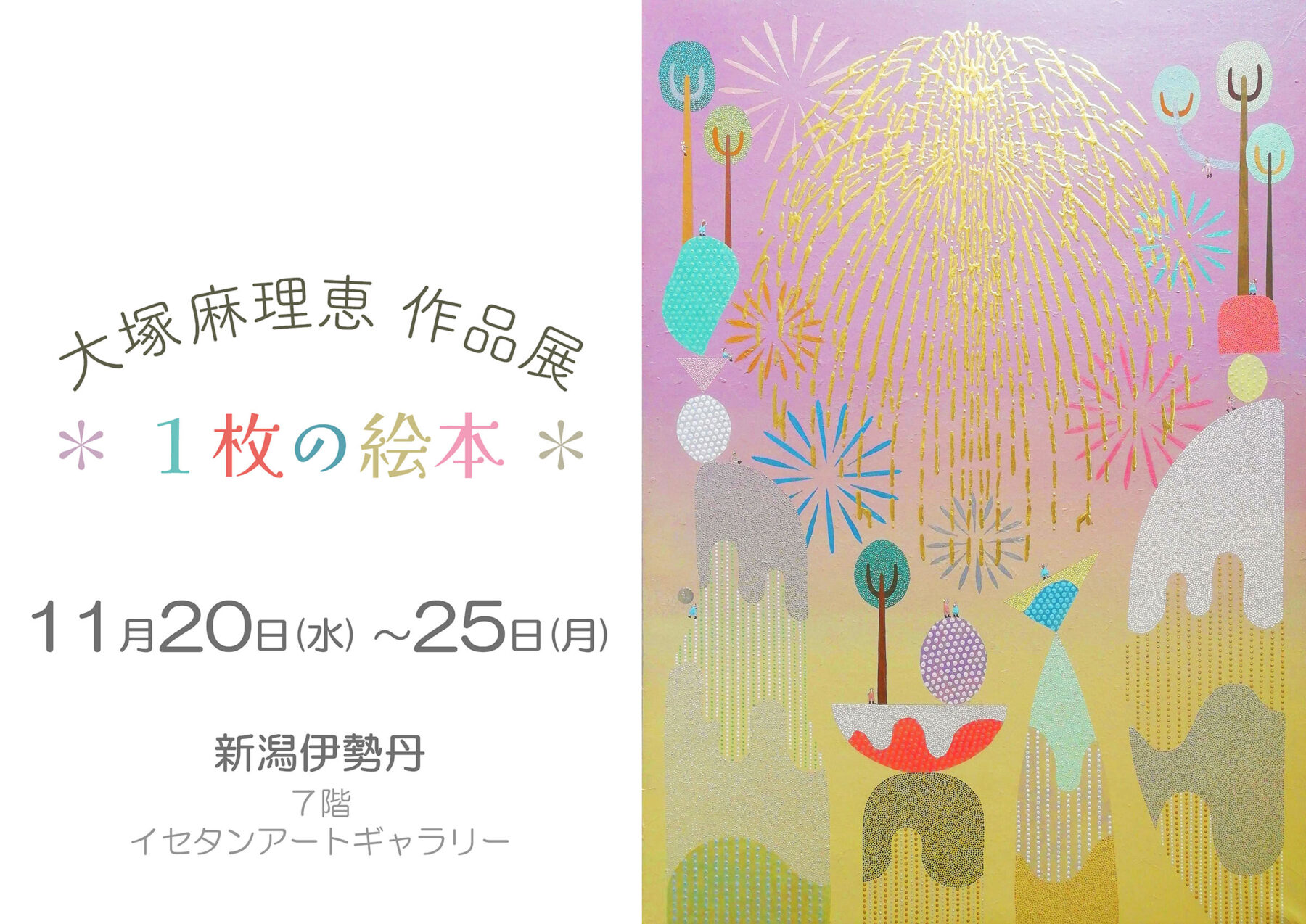
Marie Otsuka Exhibition
~ A one-page picture book ~
November 20th (Wed) to 25th (Tue), 2024
Isetan Niigata, 7F Isetan Art Gallery
(Last day closes at 4pm)
Free Admiss